This post may contain affiliate links. Please see our disclosure policy.
Seedless black raspberry jelly captures the essence of fresh summer black raspberries right in your pantry for year-round eating, and the only thing missing is those pesky seeds. Trust me, it’s much better that way!
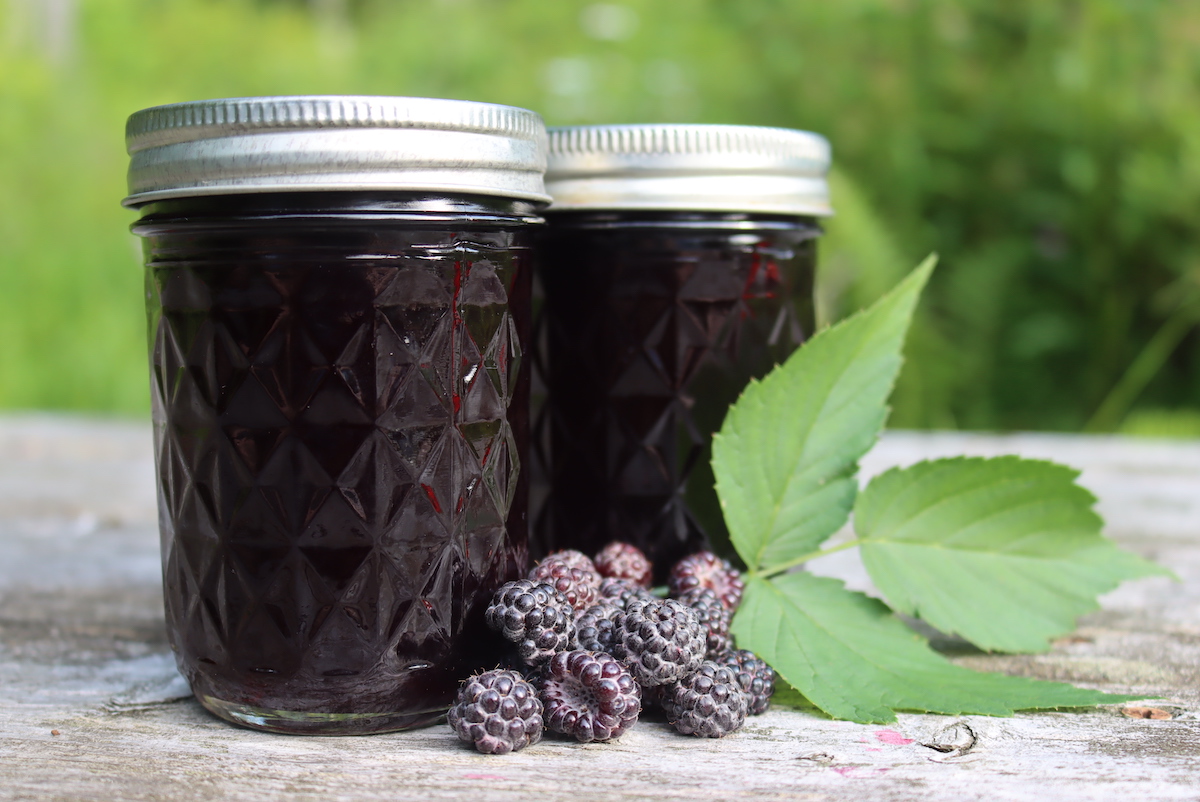
We’re blessed with an abundance of wild black raspberries each summer, and it seems like there’s more each year. The first few years I made black raspberry jam and I slowly harvested them over several days until I had enough for a batch.
These days, it seems like I could pick a bucket of these beautiful fruits each day, and truth be told, I’m happier eating them without the seeds. I don’t mind blackberry seeds in my homemade blackberry jam, and I think both raspberry jam and raspberry jelly are spectacular.
While flavorful, black raspberries are extra seedy, and they seem to have a greater proportion of seeds than other berries. Seedless black raspberry jelly is definitely the way to go when you harvest a bumper crop of black raspberries.
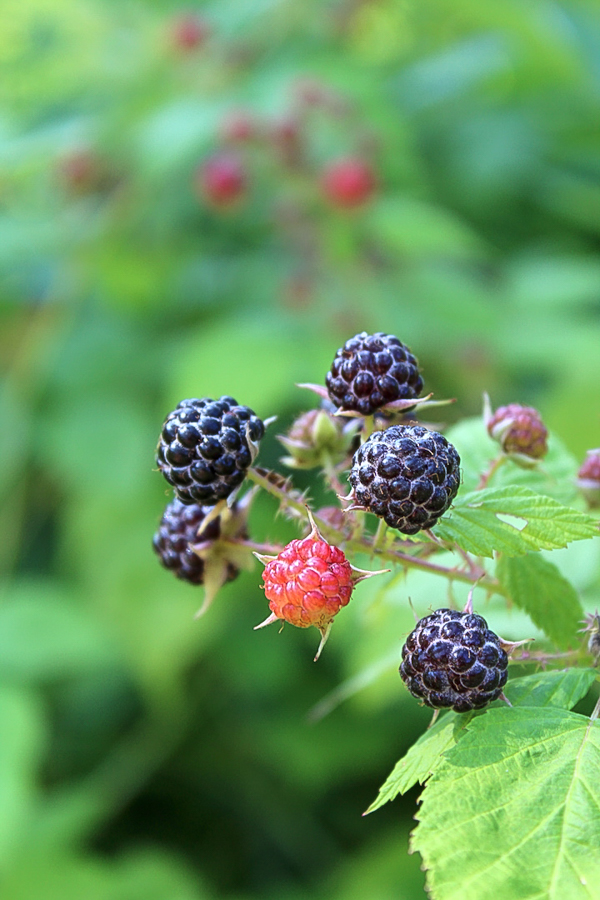
Harvesting Fruit for Black Raspberry Jelly
The first step in making black raspberry jelly is finding fresh black raspberries. Generally, when making berry jelly, it’s helpful to harvest a proportion of the fruit a tiny bit underripe.
Underripe berries have more natural pectin in them than fully ripe berries. I’m not saying totally unripe, I just mean berries that are not quite jet black yet. Harvesting about 1/4 to 1/3 of the berries slightly underripe, with just a slightly brighter color than the jet black fully ripe ones, will ensure a good set on the jelly.
This is more important with other types of berries, and black raspberries happen to be particularly pectin-rich. If you happen to have fresh black raspberries from the farmer’s market that are fully ripe you’ll likely be just fine, but opt for some underripe if you can.
In our yard, I generally have my pick of berries (and the birds do too), so there are plenty of both fully ripe and slightly underripe berries to go around.
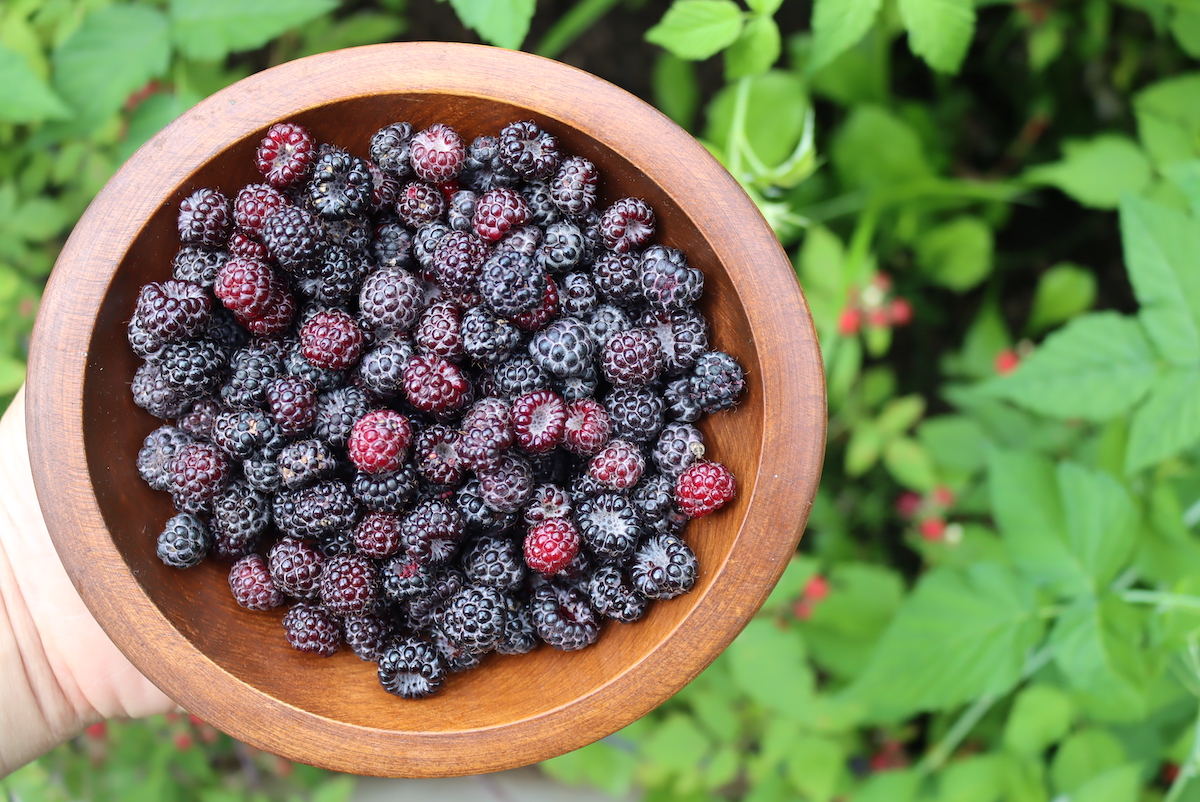
How to Make Black Raspberry Jelly
Start by juicing the black raspberries by cooking them with a small amount of water. I’d suggest using about 1 cup of water per quart of fruit (or 1/4 cup water per cup of fruit).
You’ll need a bit less than a quart of fruit (3 to 4 cups) of fruit for every cup of juice. Generally, a “batch” of jelly is made with 4 cups of juice, so you’ll want 3-4 quarts of fruit.
(That’s considerably more fruit per cup of juice than when you’re making blackberry jelly, as black raspberries have a lot less juice. The process and recipe are otherwise quite similar.)
Simmer the juice with a bit of water until the fruit have completely fallen apart, and then strain the mixture through a jelly strainer or a double layer of dampened cheesecloth. Measure the resulting juice.
For every cup of juice, add 3/4 cup of sugar. If you have 4 cups of juice, you’ll want to add 3 cups of sugar.
Bring the juice and sugar to a boil in a jelly pot and cook, stirring continuously, until it reaches gel stage (220 degrees F on an instant-read thermometer). Lacking a thermometer, you can test for set on a plate that’s been chilled in the freezer. When set, it should solidify quickly on the cool plate and then wrinkle back when pressed with a spoon.
It should take about 8 to 10 minutes to set properly but could take longer as there’s always variation in fruit and juice.
Once ready, pour the finished jelly into jars leaving 1/4 inch headspace.
Canning Black Raspberry Jelly
As always, actually canning jelly is optional, and you could always store this in the refrigerator for up to 3 weeks, or freezer for up to 6 months.
Personally, though, I prefer canning because it’s quick and easy, and it ensures I can enjoy the taste of summer black raspberries year-round. That’s extra nice during our long Vermont winter.
If you’re not familiar with canning, I’d suggest reading my beginner’s guide to water bath canning before getting started.
Fill the jars, either half-pints or pints, leaving 1/4 inch headspace. Load them into a pre-heated water bath canner and process for 10 minutes (or 15 minutes if above 6,000 feet in elevation).
Remove the jars to cool on a towel on the counter, and leave them undisturbed for 24 hours to seal. Check the seals and store any unsealed jars in the refrigerator for immediate use.
Properly canned and sealed jars will maintain peak quality on the pantry shelf for 12-18 months.
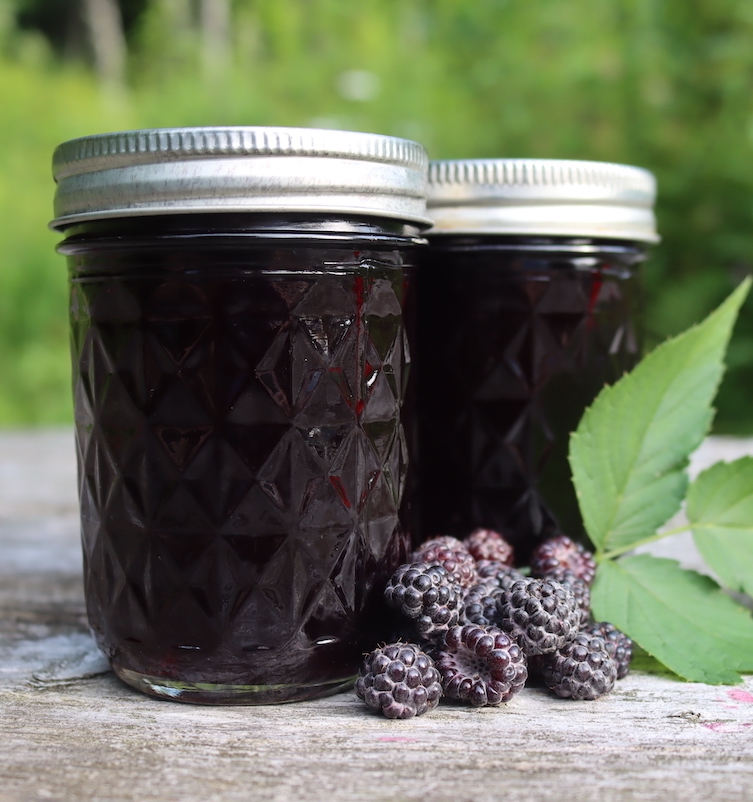
Black Raspberry Recipes
Looking for more ways to use black raspberries?
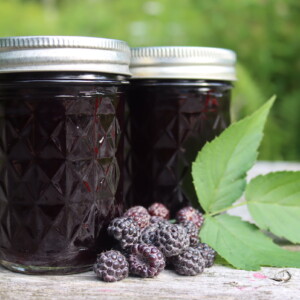
Black Raspberry Jelly (Seedless)
Equipment
Ingredients
- 4 cups black raspberry juice, from 3-4 quarts black raspberries
- 3 cups sugar
Instructions
- Start by extracting the juice from the fruit by cooking it with a bit of water until the fruit falls apart and releases its juices. Around 1/4 cup water per cup of fruit works well, or 1 cup per quart. Simmer for 10-15 minutes, or until the fruit completely falls apart. Measure the juice.
- For every cup of juice, add 3/4 cup of sugar. This recipe uses 4 cups juice and 3 cups sugar, but can be scaled to accommodate more or less juice depending on your yield. Do not use more than 8 cups of juice per batch or it may have trouble jelling.
- If canning, prepare a water bath canner.
- Place the juice and sugar in a to a saucepan and bring to a hard boil. Cook on medium-high heat, stirring frequently, until it reaches gel stage (220 degrees F measured with an instant-read thermometer). You can also test for set on a plate that's been chilled in the freezer. This should take about 8 to 10 minutes, but might take longer.
- When it reaches the gel stage, ladel the jelly into prepared jars leaving 1/4 inch headspace.
- If canning, process the jars for 10 minutes in a water bath canner, adjusting for altitude. Remove from the canner and allow the jars to cool on a towel on the counter, checking seals after 24 hours.
- Store any unsealed jars in the refrigerator for immediate use, and store properly canned and sealed jars on the pantry shelf at room temperature.
- Properly canned and sealed black raspberry jelly will maintain quality on the pantry shelf for 12-18 months. If not canned, the jelly will keep several weeks in the refrigerator, longer if unopened.
Notes
Nutrition
Nutrition information is automatically calculated, so should only be used as an approximation.
Easy Jelly Recipes
Need a few more silky-smooth homemade jellies for your pantry shelf?
Summer Canning Recipes
Putting up more than just jelly this season?
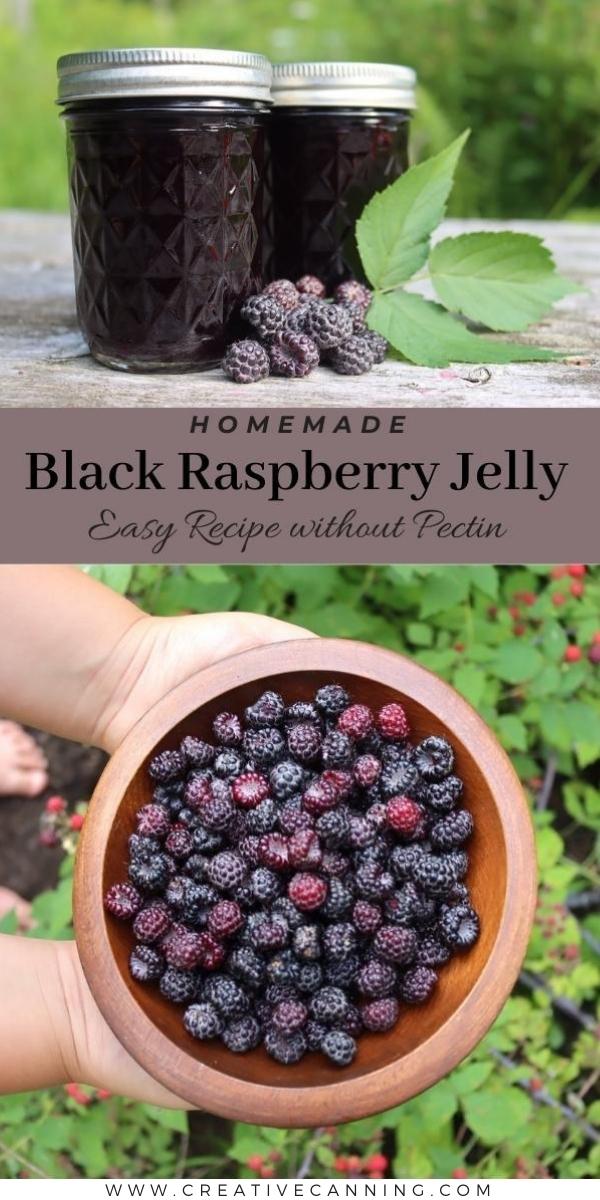
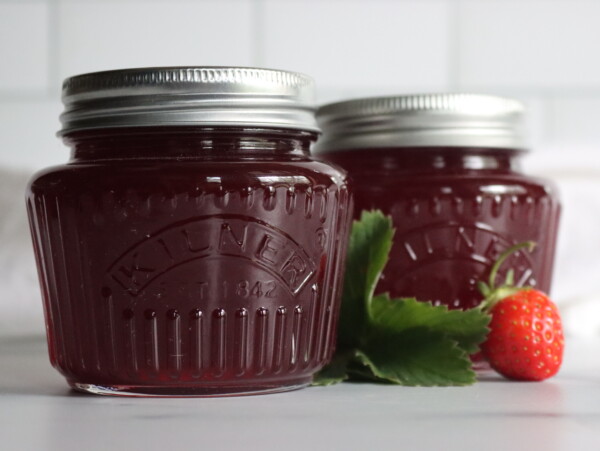
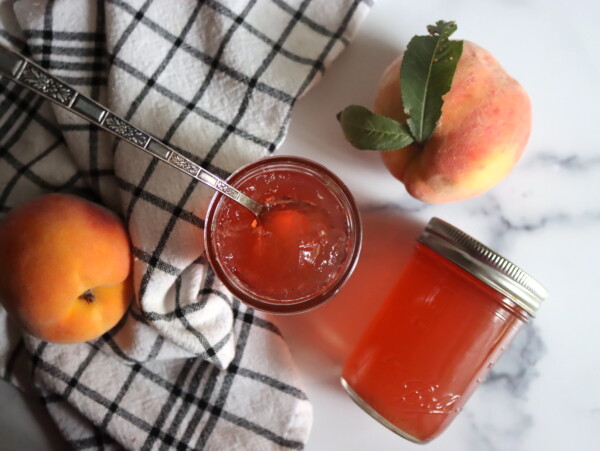
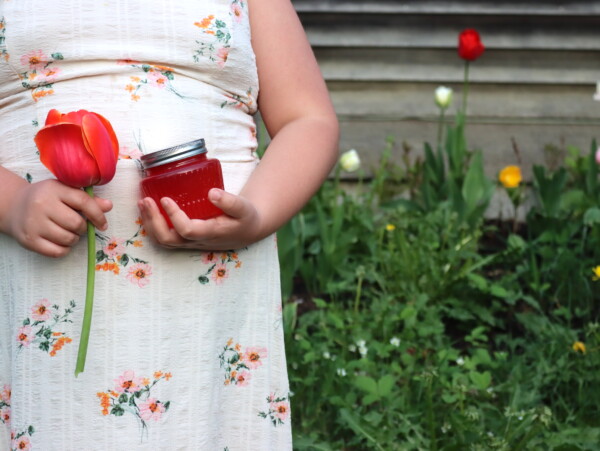
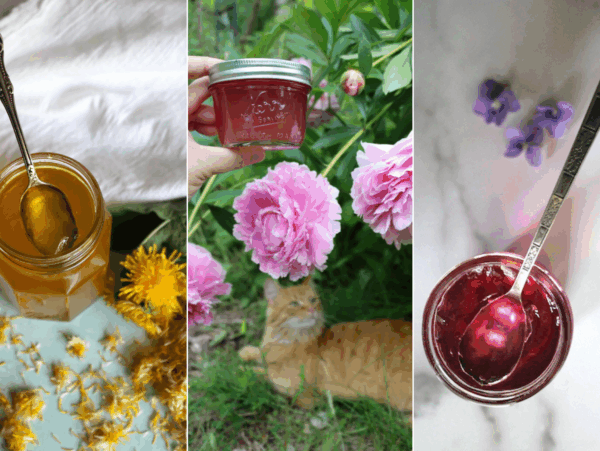
Can you use frozen berries in this recipe? I’m afraid the berries I’ve already picked will go bad before the rest ripen.
Freezing denatures some of the pectin in the fruit, and black raspberries may not set properly without pectin if frozen first. I haven’t tested this recipe with frozen fruit, it may or may not set. You can try it if you like, it might work. But, I know you can set it just fine using pectin. Use my cherry jelly recipe, and replace the extracted juice of cherries with the black raspberry juice.
I’m surprised this thickens without the seeds or pectin! I had always heard the seeds have the pectin so I didn’t realize you could make it without pectin and the seeds ☺️good to know
Yup, it thickens just fine, provided there’s enough sugar. Black raspberries have quite a bit of natural pectin, and it sets nicely. (That’s also true of blackberries and raspberries too, I set my seedless jellies with all of those without added pectin.)